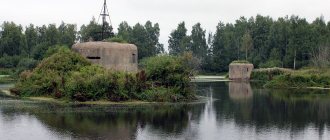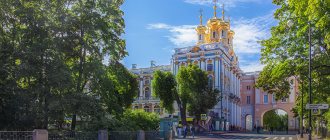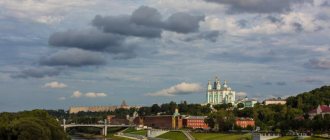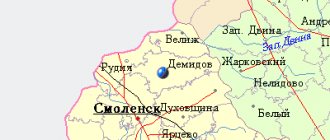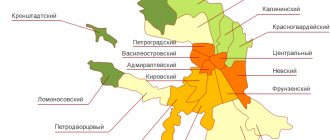City in Leningrad Oblast, Russia
| Boksitogorsk Boksitogorsk | |
| Town[1] | |
| Lenin Square in Boksitogorsk | |
| Flag Coat of arms | |
| Location Boksitogorsk | |
| Boksitogorsk Location Boksitogorsk Show map of Russia Boksitogorsk Boksitogorsk (Leningrad region) Show map of Leningrad region | |
| Coordinates: 59°29′N 33°50'E / 59.483°N Latitude 33.833°E / 59.483; 33.833Coordinates: 59°29′N 33°50'E / 59.483°N Latitude 33.833°E / 59.483; 33.833 | |
| A country | Russia |
| Federal subject | Leningrad region[1] |
| Administrative region | Boksitogorsky district[1] |
| Municipal settlement | Municipal formation Boksitogorskoe village[1] |
| Based | 1929[2] |
| City status from | 1950[2] |
| Height | 100 m (300 ft) |
| population (2010 Census)[3] | |
| • General | 16,585 |
| • Evaluate (2018)[4] | 15,380 (−7.3%) |
| Administrative status | |
| • Capital from | Boksitogorskoye district[1], Municipal formation Boksitogorskoye village[1] |
| Municipal status | |
| • Municipal district | Boksitogorsk municipal district[5] |
| • Urban village | Boksitogorsk urban settlement[5] |
| • Capital from | Boksitogorsk municipal district[5], Boksitogorskoye urban-type settlement[5] |
| Timezone | UTC + 3 (MSK [6]) |
| Postal code(s)[7] | 187650, 187651 |
| Dial code(s) | +7 81366[8] |
| OKTMO I WOULD | 41603101001 |
| Web site | www.boksitogorsk.org |
Boksitogorsk
(Russian: Boksitogorsk) is a town and administrative center of Boksitogorsk District in Leningrad Oblast, Russia, located on the banks of the Pyardomlya River in the basin of the Syas River, 245 km (152 mi) east of Saint Petersburg. Population: 16,585. (2010 Census)[3]
Story
Bauxite Settlement
(Bauxite)[9] was founded in 1929 to house local bauxite workers.[2] It was part of the Tikhvin district of the Leningrad region.[10] Construction of the bauxite plant began in December 1934.[9] In 1935, the settlement was granted urban-type settlement status and a real name.[2] In 1940, the population approached 10,000 people, a school, a kindergarten, a nursery, an outpatient clinic and a pharmacy, several canteens, and shops were built.[9] In 1950, Boksitogorsk was given city status.[2] On July 25, 1952 it became the administrative center of the Boksitogorsk region.[9]
The current situation of the Boksitogorsk region and its potential
By the beginning of the 90s, due to open-pit mining of raw materials for the aluminum industry, two dozen quarries were formed near Boksitogorsk, surrounded by waste rock dumps, but these areas were subject to reclamation and planted with trees. Unfortunately, in the 1990s and 2000s, active illegal logging of valuable trees was carried out in the Boksitogorsk region, which led to the destruction of forests over a large area. In recent years, an effective fight against “black loggers” has been carried out here. Some industrial facilities in the region were affected by the crisis of 2008-2009, but then they resumed stable operation.
Located in the southeast of the Leningrad region, the Boksitogorsky district is very attractive for tourists and has significant recreational potential. A seventh of its territory is occupied by lakes, of which there are approximately three hundred. Here you can find a bear (depicted on the coat of arms of the region), muskrat, elk, fox, wolf, black grouse, and hazel grouse. Forests cover more than half the area of the region. The most beautiful of them are located on the territory of the Vepsian Forest national reserve.
The hiking routes include the Ragusha River, which hides underground over a four-kilometer stretch and forms a picturesque waterfall when it appears on the surface. Many guests gather for the Vepsian cultural festival “Cheese Day”, which is held regularly in the Boksitogorsk region (representatives of this ancient people still live here today). Useful information regarding the Boksitogorsky district can be found on the portal, which also presents advertisements in the Leningrad region, posted in various sections.
Economy
Industry
Boksitogorsk is home to several manufacturing enterprises, including an aluminum smelter, which is one of Rusal's subsidiaries, as well as producers of reinforced concrete, alcohol, food and milk. In Boksitogorsk there are also enterprises for the extraction of peat and the production of plastic products.[13]
Transport
The N-3 highway Dymi–Boksitogorsk–Bochevo passes through the city.
The A-114 This is sad–Pikalyovo–Vologda highway runs 11 km north of Boksitogorsk.
The local line connects the Bolshoi Dvor railway station on the St. Petersburg - Vologda railway line with Boksitogorsk. However, there is currently no passenger service.
Public transport includes several urban, suburban and intercity bus routes operated by local transport companies.
Boksitogorsk
Slavs and Vepsians
The first settlers on the territory of modern Boksitogorsk were the Ves tribes (or Vepsians). The Slavic tribes of the Ilmen Slovenes and Krivichi arrived on this land between the 5th and 8th centuries. The Slavs settled among the Vepsians. The resettlement took place peacefully. Most of the hydronyms on the territory of the current Boksitogorsk urban settlement are of Slavic origin. The most famous archaeological monuments on the Boksitogorsk land (cemeteries, burial mounds and zhalniki) appeared in the 7th–13th centuries. Most of the monuments became known in the first half of the twentieth century thanks to the archaeologist from Tikhvin V. Ravdonikas, who later became the most famous Soviet archaeologist.
Initially, the development of the Boksitogorsk land took place by waterways. Some of them were important in terms of trade. Boksitogorsk stands on the Pyardomlya River, a tributary of the Volozhba River, once called Volozh (from the words “volok”, “volozhka”). The ancient route from Novgorod and the Baltic leading to the Volga, which became known already in the 7th century, passed through Volochenka, then through Lake Voloshskoye (Voloshino), then through the Ponyr River, after which onto the portage and into the Chagoda River. Part of the well-known route “from the Varangians to the Greeks” passed through the Volkhov River.
Natural resources
During the era of Alexander II's reforms, one of the most significant events for the future of the city took place. The famous geologist A. Ditmar discovered red clay in 1869 near the village of Senno. As it turned out later, the clays contained bauxite. However, at the then level of technological development, the production of aluminum could have been more expensive than processing gold, since it required a huge amount of energy. In the 1880s, entrepreneur A. Brent was engaged in clay fishing. Clay was mined on the Ragusha River, and then paints were made from it. The Tikhvin deposit was discovered in 1916. Tikhvin engineer T. Timofeev delivered rock samples to the Geological Committee of St. Petersburg, which turned out to be aluminum ores containing silica impurities.
Workers' village
The real development of the deposits began only after the revolution. In 1929, in connection with the development of bauxite mines, the construction of the village of Bauxites began. By decree of the Presidium of the Supreme Soviet of the RSFSR, the settlement received the status of a workers' settlement in 1935. There is information that the village was named Boksitogorsk at the Boksity railway station. By the beginning of the 30s, the settlement was connected through the Bolshoi Dvor station with the Leningrad-Vologda railway line. The station at the village retained the name Boksity. In 1938, the Tikhvin Aluminum Plant (its current name is OJSC Boksitogorsk Alumina) reached its design capacity.
From village to city
The population of the workers' settlement grew at a relatively rapid pace. By the beginning of the 40s, about ten thousand people lived in Bauxites. All the necessary social facilities appeared in the village: several shops and canteens, a nursery and kindergarten, a secondary school and an outpatient clinic with a pharmacy. During these same years, the first stone buildings were built in the village. On April 29, 1941, an artificial peat dewatering plant was put into operation, which later became a biochemical plant. Peat was mined from the Laryanskoye swamp, located northwest of Boksitogorsk. Over time, a peat mining enterprise also appeared in the village of Laryan.
In connection with the outbreak of the Great Patriotic War, industrial enterprises and the specialists who worked at them had to be evacuated beyond the Urals. In the period from 1941 to 1943, more than twenty hospitals of various levels were located in Boksitogorsk for soldiers and officers of the Karelian, Volkhov and Leningrad fronts. Repair workshops for military equipment - airplanes, tanks, etc. - were organized on the territory of the alumina plant. A military airfield was created in Boksitogorsk.
Production at the alumina refinery was restored in the late 40s. The workers' settlement was given city status in 1950. In 1952, Boksitogorsk became the administrative center of the district of the same name. The City Council of Working People's Deputies became subordinate to the Leningrad Regional (Industrial) Council of Working People's Deputies in 1963. In 1965, the City Workers' Council took over the management of the area. The municipal entity “Boksitogorsk urban settlement” was established on January 1, 2006. The city of Boksitogorsk became its administrative center.
Recommendations
Notes
- ^ a b c d f g gram hour
Area Law No. 32-ounce - ^ a b c d e Encyclopedia of Russian Cities
. Moscow: Great Russian Encyclopedia. 2003. p. 50. ISBN 5-7107-7399-9. - ^ a b c
Federal State Statistics Service of Russia (2011).
“All-Russian Population Census 2010. Volume 1" [All-Russian Population Census 2010, vol. 1]. All-Russian Population Census 2010 [All-Russian Population Census 2010]
(in Russian). Federal State Statistics Service. - "26. The size of the permanent population of the Russian Federation by municipalities as of January 1, 2022.” Federal State Statistics Service. Retrieved January 23, 2022.
- ^ a b c d f
Law No. 78-ounce - "On the calculation of time." Official Internet portal of legal information
(in Russian). June 3, 2011. Retrieved January 19, 2022. - Post office. Information and computing center of OASU RPO. ( Post office
).
Search for postal facilities ( Search for postal facilities
) (in Russian) - Telephone codes of the Leningrad region (in Russian). Russian telephone codes. Retrieved February 26, 2014.
- ^ a b c d
About the settlement (in Russian). Administration of Boksitogorsk urban settlement. Archived from the original on September 7, 2013. Retrieved February 26, 2014. - History of the area (in Russian). Boksitogorsk municipal district. Archived from the original on September 28, 2013. Retrieved February 26, 2014.
- Federal State Statistics Service of Russia (May 21, 2004). “The population of Russia, the constituent entities of the Russian Federation as part of federal districts, urban settlements, urban settlements, settlements, settlements of 3 thousand or more people.” [Population of Russia, its federal districts, federal subjects, districts, urban settlements, rural settlements - administrative centers, rural settlements with a population of more than 3000 people] (XLS). All-Russian Population Census of 2002 [All-Russian Population Census of 2002]
(in Russian). - “All-Union Population Census of 1989. The actual population of the union and autonomous republics, autonomous regions and districts, territories, regions, urban settlements and villages. Primorskoye urban settlement of the Vyborg district of the Leningrad region and Glebychevskoye rural settlement of the Vyborg district of the Leningrad region and about amendments to certain Regional laws." Came into force on the date of official publication. Published: “Vesti”, No. 112, June 23, 2010 (Legislative Assembly of the Leningrad Region. Regional Law No. 32-oz dated June 15, 2010 On the administrative-territorial structure of the Leningrad Region and the procedure for changing it
As amended by the Regional Law dated 05.08. 2014 No. 23-oz.
On the annexation of the municipalities “Primorskoye Urban Settlement” of the Vyborg District of the Leningrad Region and the “Glebychevskoye Rural Settlement” of the Vyborg District of the Leningrad Region and amendments to various regional laws.
Effective from the date of official publication.). - Legislative Assembly of the Leningrad Region. Regional Law No. 78-oz of October 26, 2004 “On establishing boundaries and granting the status of an official municipal formation to the Boksitogorsk municipal district and the municipalities within it,” as amended. Regional Law No. 22-oz dated May 8, 2014 “On the merger of the municipalities Anisimovskoye rural settlement of the Boksitogorsk municipal district of the Leningrad region and the Samoilovskoye rural settlement of the Boksitogorsk municipal district of the Leningrad region and on amendments to certain Regional laws.” Came into force 10 days from the date of official publication (November 29, 2004). Published: “Bulletin of the Government of the Leningrad Region”, No. 34, November 19, 2004 (Legislative Assembly of the Leningrad Region. Regional Law No. 78-oz of October 26, 2004 On establishing boundaries and giving the appropriate status to the municipal formation Boksitogorsky municipal district and included in its composition to municipal entities
As amended by Regional Law dated 05/08/2014 No. 22-oz.
On the annexation of the municipalities Anisimovskoye rural settlement of the Boksitogorsk municipal district of the Leningrad region and the Samoilovskoye rural settlement of the Boksitogorsk municipal district of the Leningrad region and amendments to various regional laws
. Valid after 10 days from the date of official publication (November 29, 2004).
The significance of the Boksitogorsk district for the Leningrad region and for St. Petersburg?
Today, there are industrial facilities operating here that are important for the North-West of Russia in general and for St. Petersburg and the Leningrad region in particular. Enterprises of the Boksitogorsk region produce alumina, potash, limestone, cement, soda, gallium, plastic products, lumber, and peat processing.
Such large enterprises as OJSC RUSAL Boksitogorsk Alumina (which, in addition to aluminum oxide, also produces corundum products, abrasive, grinding and refractory materials) and CJSC BaselCement-Pikalevo (which produces, in particular, technical gallium and nepheline sludge), are city-forming and provide employment to many people. Construction materials supplied by Pikalevsky Cement CJSC are in demand both in the Leningrad region and throughout the Northwestern Federal District of the Russian Federation. In particular, the products of this enterprise were used in the construction of the St. Petersburg metro and ring road, dams and port facilities of the Northern capital, as well as the Leningrad nuclear power plant.
